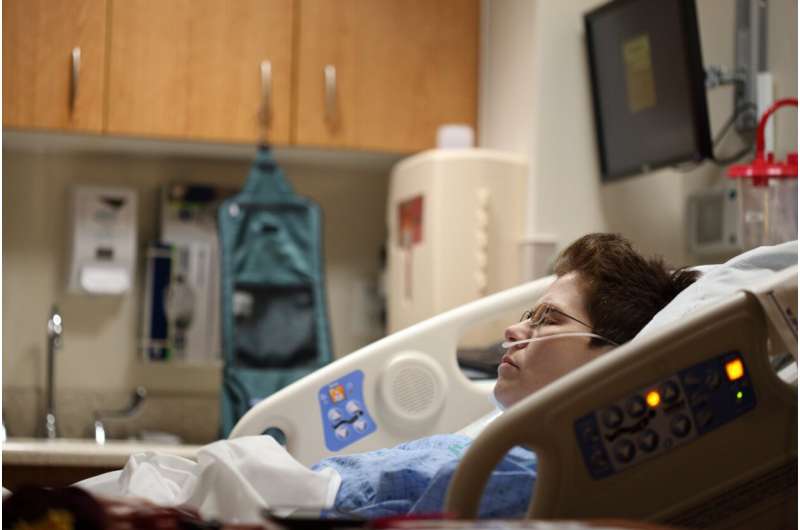This article has been reviewed according to Science X's editorial process and policies. Editors have highlighted the following attributes while ensuring the content's credibility:
fact-checked
proofread
More patients go home instead of to long-term-care when sedation for common procedures is conducted by anesthesiologist

Patients who had common procedures performed outside of the operating room (OR) were more likely to go home instead of to a long-term care facility when they were discharged from the hospital if their sedation was administered or directed by an anesthesiologist, rather than by a physician who is not a trained anesthesiologist, according to a first-of-its-kind study presented at the ANESTHESIOLOGY 2023 annual meeting.
Patients who need catheters placed in a vein, angiograms (X-ray of the blood vessels), image-guided biopsies and many other procedures typically are treated in the interventional radiology (IR) suite instead of the OR and given sedation.
Sedation is a type of anesthesia that relieves anxiety, controls pain and discomfort, and sometimes makes them fall asleep. One in 10 patients admitted to the hospital requires an IR procedure and many are at increased risk for complications due to health issues or having more complex procedures.
The study was the first to directly compare the hospital discharge outcomes of patients who received sedation administered by an anesthesiologist, or by a nurse anesthetist under the direction of an anesthesiologist, to the discharge outcomes of patients whose sedation was administered or directed by a physician who was not an anesthesiologist, such as a radiologist or cardiologist. Anesthesiologists are physicians who are experts in ensuring the safety and comfort of patients undergoing surgery and other procedures and are highly trained in critical care to manage medical emergencies if there is a complication.
"We focused on patients undergoing IR procedures as they often have health issues such as heart disease or diabetes and some of the procedures are high risk," said Matthias Eikermann, M.D., Ph.D., senior author of the study and chair of the department of anesthesiology at Montefiore Medical Center, Bronx, New York.
"We found anesthesiologists add value to patients undergoing interventional radiology procedures. That's especially true for complex neurovascular procedures such as angiograms for the treatment of aneurysms or the creation of an arteriovenous (AV) fistula, a connection between an artery and a vein, for people on dialysis and those that typically take longer than an hour."
In the study, 9,682 patients had sedation in the IR suite and 1,639 (16.93%) were discharged from the hospital to a long-term care facility (such as a nursing home) because of complications that they may be more likely to experience due to their disease. Anesthesiologists have the training to identify these complications early and address them.
Of those who were not discharged home, 1,429 (87%) had their sedation administered or directed by a physician who was not an anesthesiologist, often with the assistance of a nurse, and 210 (13%) had their sedation administered or directed by an anesthesiologist.
"The anesthesiologist is not just providing sedation, but life support for the patient during the entire procedure," said Dr. Eikermann. "The difference in outcomes is because anesthesiologists are trained to identify early complications and treat them immediately. Physicians who are not anesthesiologists are not trained to do that."
Anesthesiologists administered or directed sedation for higher-risk patients, such as those with more health issues or who had more invasive procedures. Despite being at higher risk, the patients who received sedation administered or directed by an anesthesiologist were nearly 70% more likely to be discharged home than those whose sedation was administered or directed by a physician who was not an anesthesiologist.
"Increasingly, high-risk patients are undergoing procedures outside of the OR," said Vilma Joseph, M.D., MPH, FASA, co-author of the study and director of procedural sedation at Montefiore Medical Center. "The presence of physician anesthesiologists as part of the anesthesia care team model has been associated with improved outcomes."
"Patients should know that they can ask for an anesthesiologist if they are concerned about excessive pain, anxiety or their safety during diagnostic procedures," said Dr. Eikermann. "Our research suggests rethinking anesthesia assignments to ensure anesthesiologists provide sedation when patients are at higher risk due to their health or are having more complex, longer or more-invasive procedures."



















